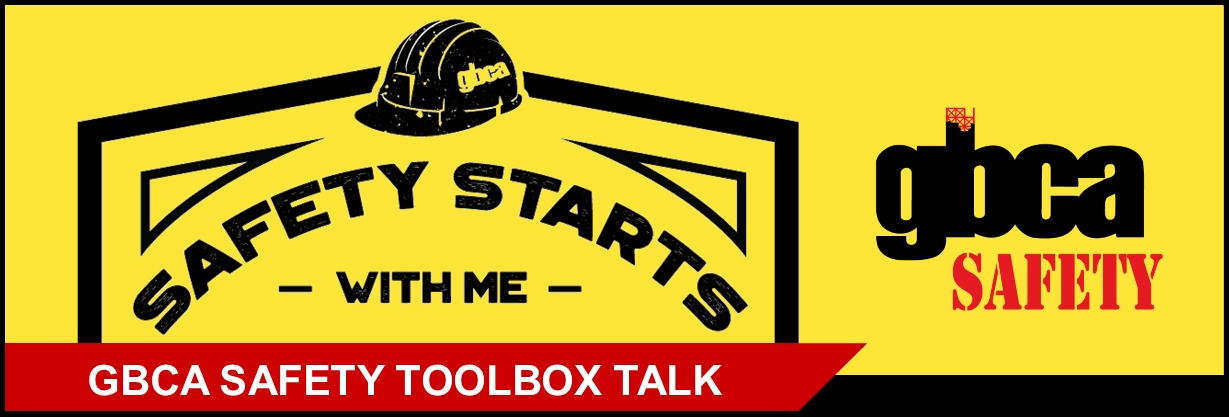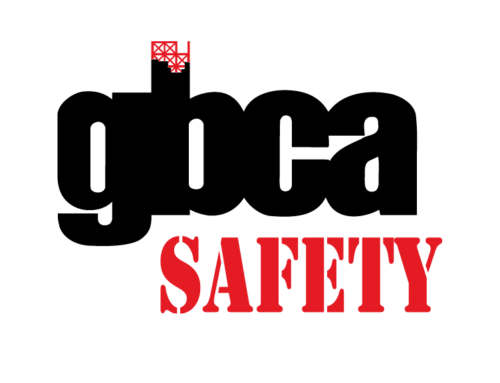This GBCA Safety Toolbox Talk discusses the issues to inspect on a ladder before using it. Click below to download the Toolbox Talk as a handout (includes Sign-In Sheet).
GBCA Safety Toolbox Talk: Ladder Inspections
Falls from ladders make up a large number of incidents on the job site. In addition to proper use, inspecting ladder condition before use can determine if a ladder is safe to use and ultimately reduce falls. Below is a list of items to inspect on a ladder before using it.
Check for the identifying manufacturers label on the side rail:
- The label provides the ladder’s specifications and capacity information.
- Ladders with damaged or illegible labels should be removed from service until new la-bels are attached.
Check the condition of the ladder itself:
- The ladder’s feet should work properly, and slip-resistant pads correctly attached.
- Steps or rungs should not be missing or loose. They should not be moveable by hand.
- Steps or rungs should be straight, clean, and not cracked.
- Spreaders, locks, & metal parts should not be loose, faulty, or in questionable condition.
- Check for cracks and exposed fiberglass on fiberglass ladders.
- Check for sharp edges on aluminum ladders.
- Visually inspect ladders for twisted or distorted rails. Check ladders rails for distortion by sighting along the rails.
Check other parts of the ladder:
- Ropes for extension ladders should be in good shape with no frays, cuts, or knots.
- Extension ladder pulleys should move freely and not bind on the rope.
What to do if a ladder is non-compliant:
- If any ladder has defects, is broken, or is bent, report your findings to your supervisor.
- Non-compliant ladders should be tagged and taken out of service. Non-compliant ladders should be repaired by a manufacturer-authorized person or be destroyed.
Ladder safety on the job is up to the user as much as the contractor or owner. Do your part by inspecting your ladder before
Remember to record the attendees of your toolbox talk!
Access GBCA’s full library of toolbox talks:





